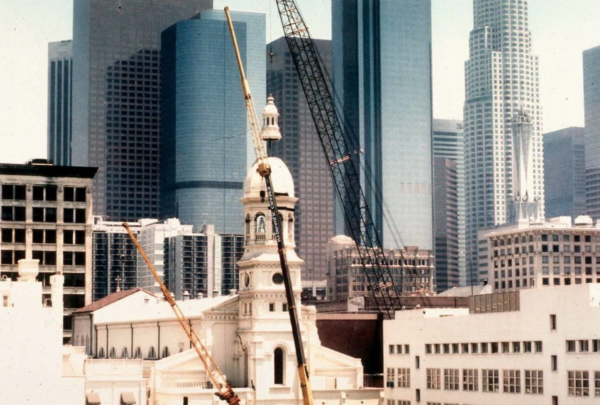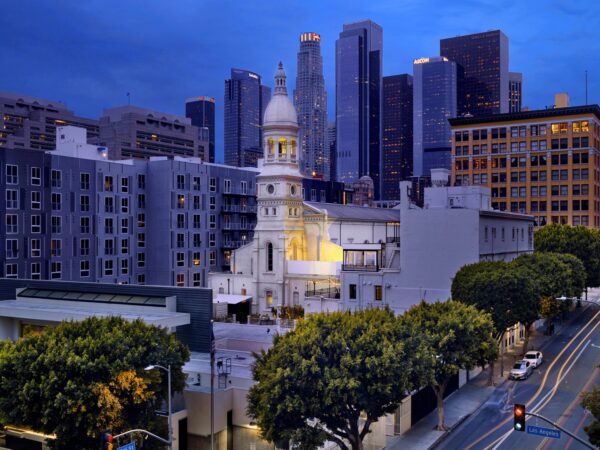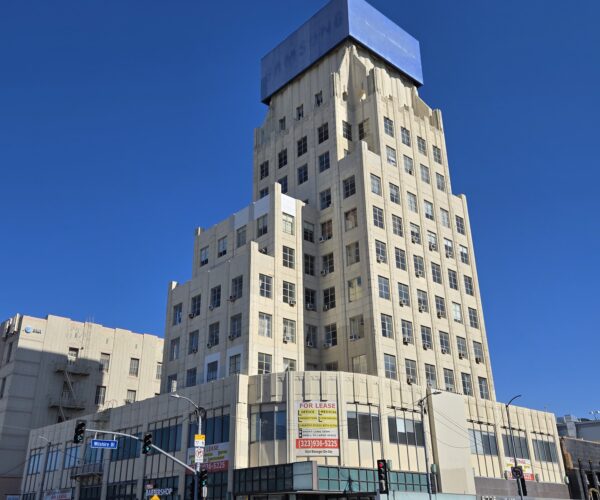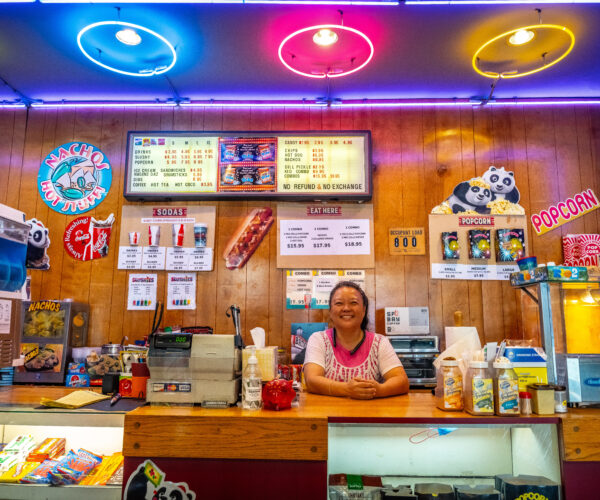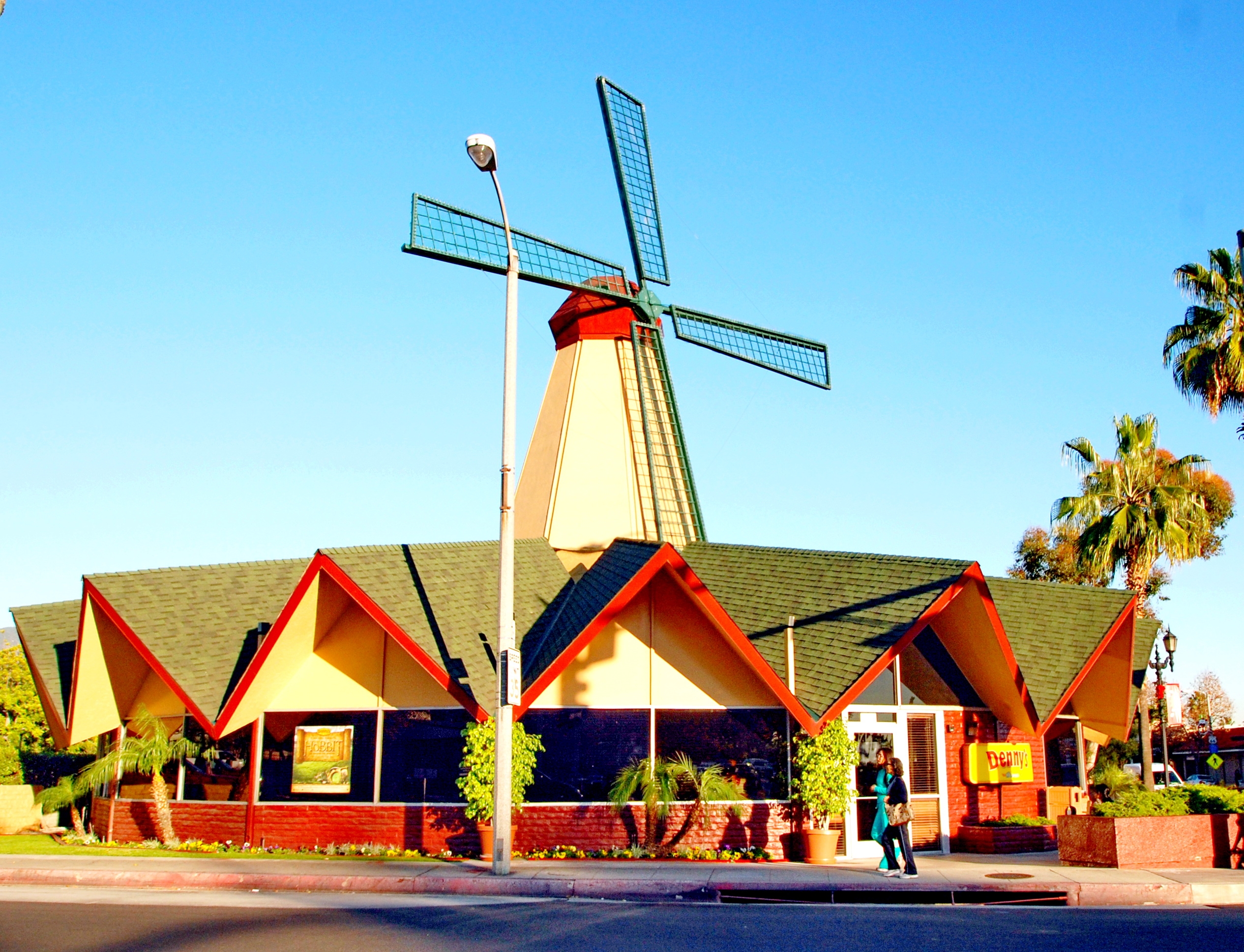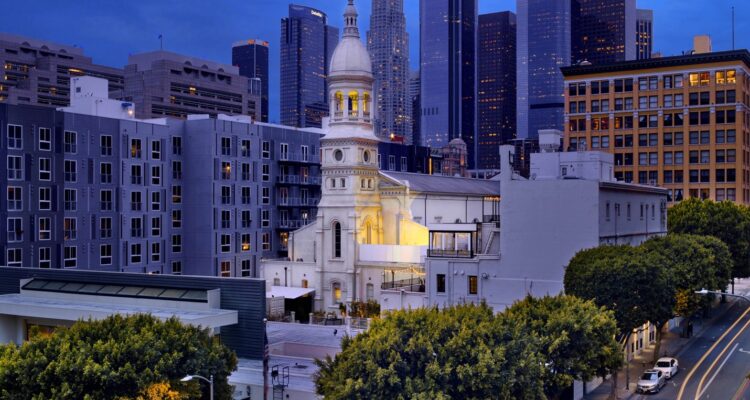
Place
Vibiana | Redbird
The former Cathedral of St. Vibiana, now known simply as Vibiana, opened in 1876 and was designed by architect Ezra F. Kysor, one of Los Angeles’ first practicing architects.
Saved
A decade-long preservation effort led by the Conservancy saved the building from demolition and helped facilitate its adaptive reuse.
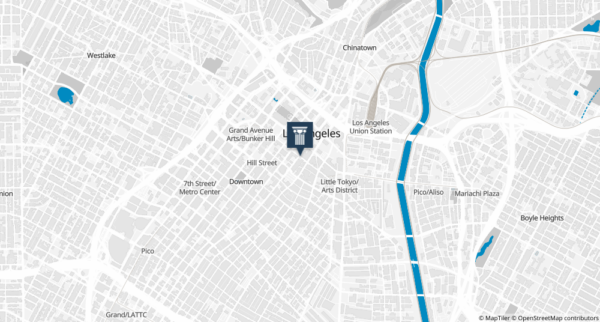
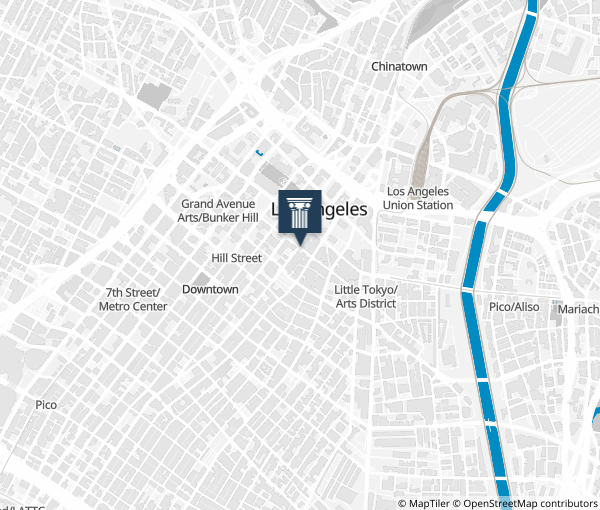
Place Details
Address
Website
Architects
Year
Style
Designation
Government Officials
Attributes
Community
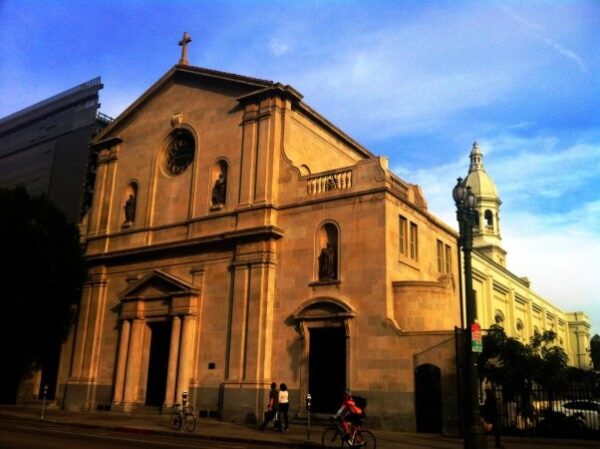
Viabana, 2012 | Adrian Scott Fine/ L.A. Conservancy
Overview
The Cathedral of St. Vibiana became the subject of a fierce preservation battle in 1996 when the Roman Catholic Archdiocese of Los Angeles tried to level the building to make way for a new Cathedral complex. The Archdiocese cited irreparable damage from the 1994 Northridge Earthquake as the reason for the cathedral’s demolition. On Saturday, June 1, 1996, the diocese began demolition illegally.
After two successful lawsuits by the Conservancy to stop the demolition, it took several years for us to find a new buyer. Developer Tom Gilmore eventually purchased the property and rehabilitated it into a special events venue. The fight to save Vibiana was a defining moment in the Conservancy’s history, forcing us to stand up to L.A.’s power structure and fueling our commitment to become more proactive.
In 2019, Vibiana-Redbird won a Conservancy Preservation Award for their stewardship of this important historic resource
About This Place
About This Place
The Cathedral of St. Vibiana opened in 1876. Designed by architect Ezra F. Kysor, one of Los Angeles’ first practicing architects, the cathedral was a stunning work of architecture in a town still emerging from its pueblo origins.
Renowned architect John C. Austin enlarged the structure in 1924 and created a new Main Street façade fashioned from Indiana limestone. St. Vibiana’s Cathedral was designated Los Angeles Historic-Cultural Monument #17 in 1963.
Our Position
In 1995, the Roman Catholic Archdiocese of Los Angeles, led by Cardinal Roger Mahony, announced plans to demolish the cathedral to make way for an all-new cathedral complex on the site. They cited irreparable damage from the 1994 Northridge Earthquake, despite repeated studies proving that the landmark could in fact be repaired and integrated into a new cathedral complex. Despite ongoing efforts by the Conservancy, the Archdiocese never wavered from its intent to demolish the cathedral and build a new cathedral complex on the site.
At 7 a.m. on Saturday, June 1, 1996, the Archdiocese began to demolish the cathedral with neither a permit nor required environmental review. The Conservancy obtained an emergency court order by midday to halt demolition, but not before the lantern had been removed from the cathedral’s bell tower cupola, with a wrecking ball poised within feet of the landmark. This illegal demolition attempt prompted the first of two lawsuits by the Conservancy to prevent the cathedral’s destruction.
The next month, in an unprecedented move, the City Council voted 14-1 to revoke the cathedral’s designation as a Historic-Cultural Monument, eliminating the need for environmental review. The Archdiocese obtained a demolition permit within two hours of the de-listing. The Conservancy obtained yet another restraining order on grounds of inadequate review, analysis, and disclosure of the intended result of de-listing: demolition of the landmark. This prompted the second lawsuit against both the Archdiocese and the City of Los Angeles.
The Conservancy ultimately prevailed in both lawsuits, despite appeals from the Archdiocese and the City. Senator Tom Hayden played a key role in preventing an attempt by the Archdiocese to circumvent state environmental review laws through legislative action.
The Archdiocese ultimately decommissioned and deconsecrated the cathedral, vacated the site, and built the new cathedral a few blocks away on Temple Street. The Conservancy pursued potential buyers for the property and in 1997 commissioned a study of options for its adaptive reuse.
In 1999, the landmark was purchased by Tom Gilmore, a visionary in using downtown’s historic buildings as catalysts for revitalization. The Conservancy worked with Gilmore Associates to secure funding from multiple sources, including $4 million from the State of California, thanks to the leadership of Senator Gilbert Cedillo; a $1 million appropriation from Congress, thanks to Congresswoman Lucille Roybal-Allard; and more than $500,000 from the Federal Emergency Management Agency (FEMA).
The building’s rehabilitation, estimated by the Archdiocese to cost $20 million, came under contract at $3.7 million. Project architects Levin and Associates, with structural engineers Nabih Youssef and Associates and general contractor PCL, adapted the structure for use as a performance and event venue, seismically reinforcing the structure while painstakingly restoring historic details.
In August 2007, after lying in a parking lot for over a decade, the lantern of the former cathedral was reattached by crane to its bell tower — capping off one of the Conservancy’s toughest preservation battles and, ultimately, greatest successes. This extraordinary moment symbolized the end of one of our most significant preservation efforts, as well as the beginning of a new life for one of L.A.’s most important structures.
